An LED Video Display is a flat panel display, which uses a uniform assemblage of Light Emitting Diodes as pixels to form a video display. Their brilliance allows them to be used outdoors, as store signages and billboards. They are also commonly used in destination signs on public transport vehicles and have made their way into corporates as large format displays in command centers, board rooms, and reception areas.
How does LED display work?
Direct View LED is a display technology typically found in a full-color video display that employs LEDs to produce red, blue, and green colors. LEDs work on ‘emissive light technology’ and hence provide images that are brighter and higher in contrast compared to the ‘transmissive technology’ of traditional LCDs. This facilitates its usage in nearly any environment.
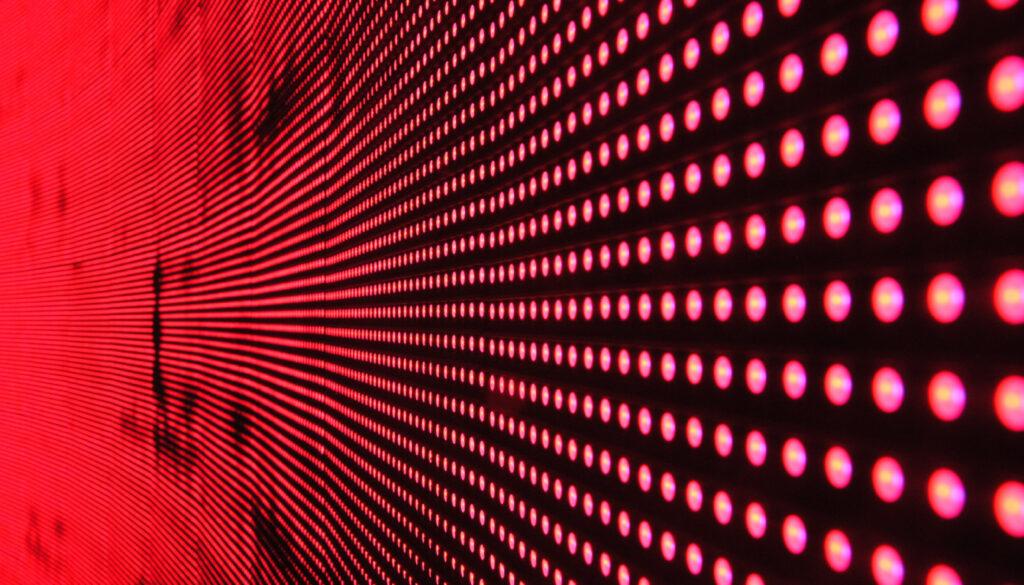
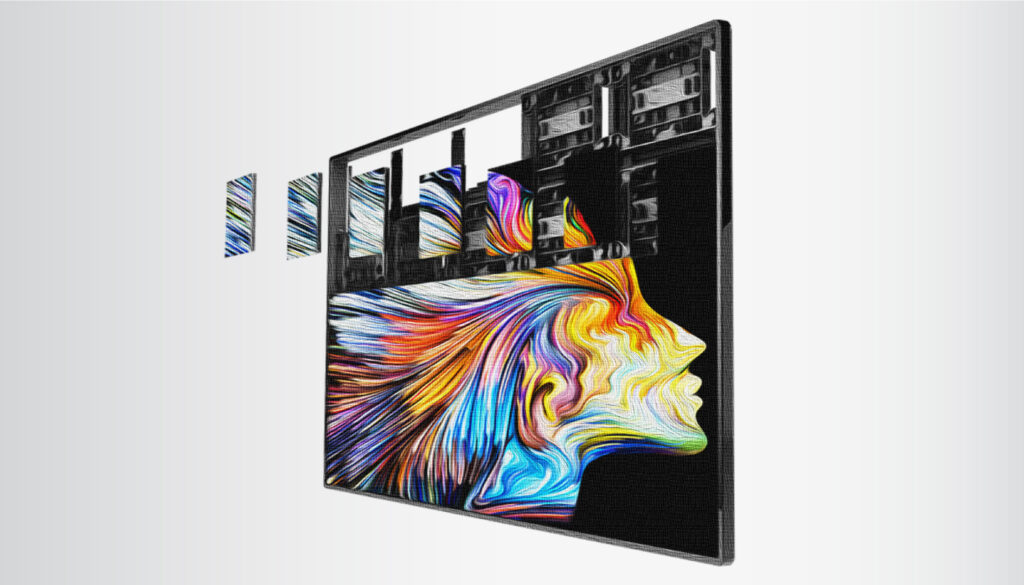
Pixel Pitch
The distance between two LED pixels is known as pixel pitch. It is measured in millimetres. Smaller pixel pitch allows more pixels to fit on display to create the image. This increases the display’s resolution allowing for more details to be visible in the image. The clearer image allows the optimal viewing distance to be shorter.
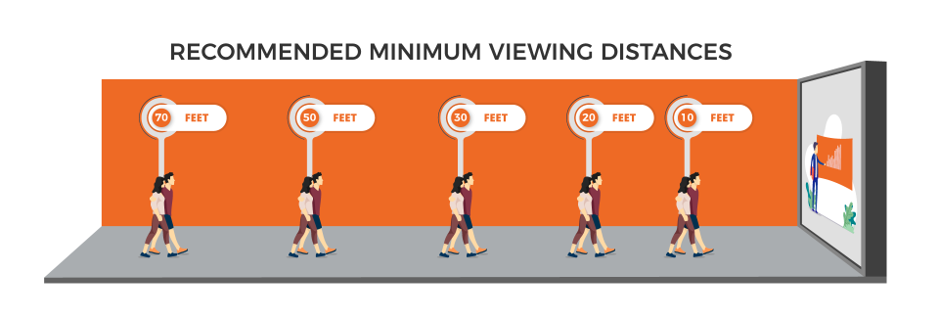
Classification of LED Displays
LED display screens are categorized in various ways based on the usage environment, color, function, and application.
- Usage Environment
LED screens are classified as indoor LED screens, outdoor LED screens, and semi-outdoor screens.
The indoor LED screen is used in indoor environments. This kind of LED screen has moderate brightness, wide viewing angle both horizontally & vertically (normally 140-160 degree), intimate color mixing space, lightweight (a single panel is less than 10kg), and higher density. It has an IP20 waterproof level and doesn’t need glue on the module surface to withstand heavy weather. It’s acceptable for closer viewing, suitable for meeting room, airport/subway, places of worship, etc.
The area of the outdoor LED screen is usually a couple of meter squares to tens of thousands or perhaps hundreds of squares. Therefore, their pixel density is comparatively less (greater than 2500-10000 pixels per m²), brightness is around 5500-8500 cd/m, at sunlight the viewing distance is a few tens of meters apart. It has an IP65 waterproof level and uses glue to withstand great wind, rain, or any other heavy weather. It’s acceptable for long-distance viewing, suitable for an outdoor music festival, live Olympic games, a highway billboard, etc.
The semi-outdoor LED screen is a mix of outdoor and indoor LED displays. It has excellent brightness and may be used outdoors under direct sunshine. The display utilizes a particular seal, typically below the eaves or from the window. It is suitable for a wedding ceremony, a marathon opening ceremony, etc.
- Color
A monochrome LED screen can display only a single color – green, amber, red or white, and often the shades of those colors.
The double main color LED screen contains green and red LEDs. The two-color display can display red, green, and yellow colors, and the 256-level grey dual-color screen can display 65,536 colors.
The full-color LED screen contains red, blue and green (RGB) LEDs that show white balance along with 16,777,216 colors.
- Function
Video Wall
Full-color screen, vibrant live video.
Graphic Sign
Dual-color screen, used as highway advertising board, billboard, etc.
Text Display
Monochrome screen normally used as a bank gate info sign.
Quotation Display
An electronic tube or monochrome screen; normally used in the train station, supermarket, or stock exchange hall, etc.
- Application
Rental LED Video Wall
Used in rental events, mostly work with LED lighting, like a music festival, concert, etc.
Fixed LED Video Wall
Used in indoor or outdoor construction buildings, like CBD, airport message sign, places worship, etc.
Fine Pixel Pitch LED Video Wall
Normally pixel pitch is under P2.5. The smallest pixel pitch is P0.7 and is used in the corporate environment for conference rooms, command centers, and reception areas.
Mini LED and Micro LED – What Makes the Difference?
Theoretically speaking, Mini LEDs and Micro LEDs are two different things.
The Micro LED is miniaturized LED with a matrix, a new generation of display technology. In simple terms, the LED unit smaller than 100 micrometers, and the LED backlight is thinner, miniaturized, and arrayed. Each pixel individually emits light (self-emitting), just like OLED.
The Mini LED, also known as sub-millimeter LED, was first coined when Epistar was referring to LEDs with a size of around 100 micrometers. Mini LED is an improved version of the traditional LED backlight and is based on transitional technology between, LED and Micro LED.
Micro LED has a simpler structure with better performance. Their biggest drawback is the mass transfer. Also, miniaturizing the LEDs is challenging as it requires wafer-level technology. For instance, 4K Micro LED screens require more than 24.88 million LED chips.
Micro LED, a revolutionary futuristic display technology, will make significant improvements in the image quality, but the current technology is not adequate. Mini LED is an upgraded version of LED backlight, and can still significantly increase the image quality of LCDs. Moreover, it is easier to curb the cost of the Mini LED, which is more likely to be the mainstream of the market.
The difference in chip size makes Micro LED and Mini LED employable in different applications.
Future of LED Displays
As the most popular product in the LED display industry, Micro LED is regarded as the leader of next-generation display technology. A large number of manufacturers have paid attention to Micro LED, which has promising market prospects.
According to LED Inside’s latest report, dual-color revenue of the Micro LED market is estimated to get to 2.891 billion US dollars.
Despite the promising outlook, Micro LED still faces a huge number of technical bottlenecks. Innovations have not been made in terms of key technologies and types of equipment. In this situation, LED companies have turned to develop Mini LED, which is a relatively mature transitional technology.
Applications
Corporate Signage

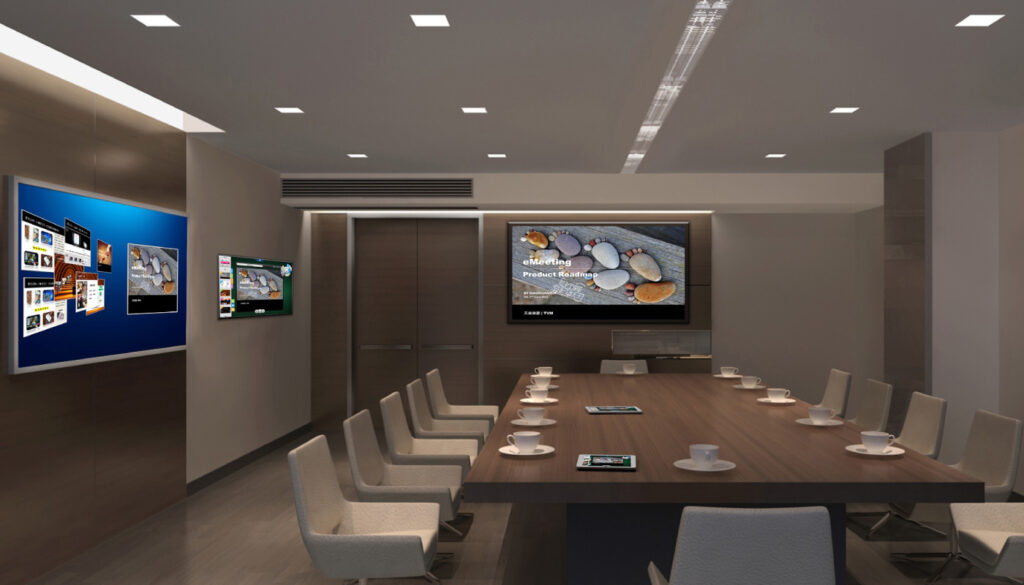
Public Spaces
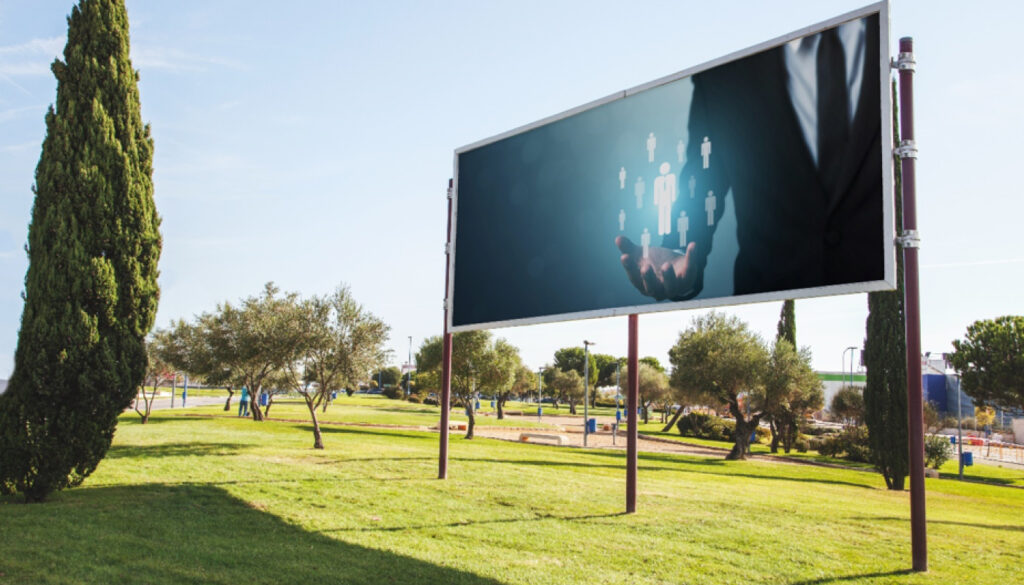
Command and Control

Retail

Transportation


